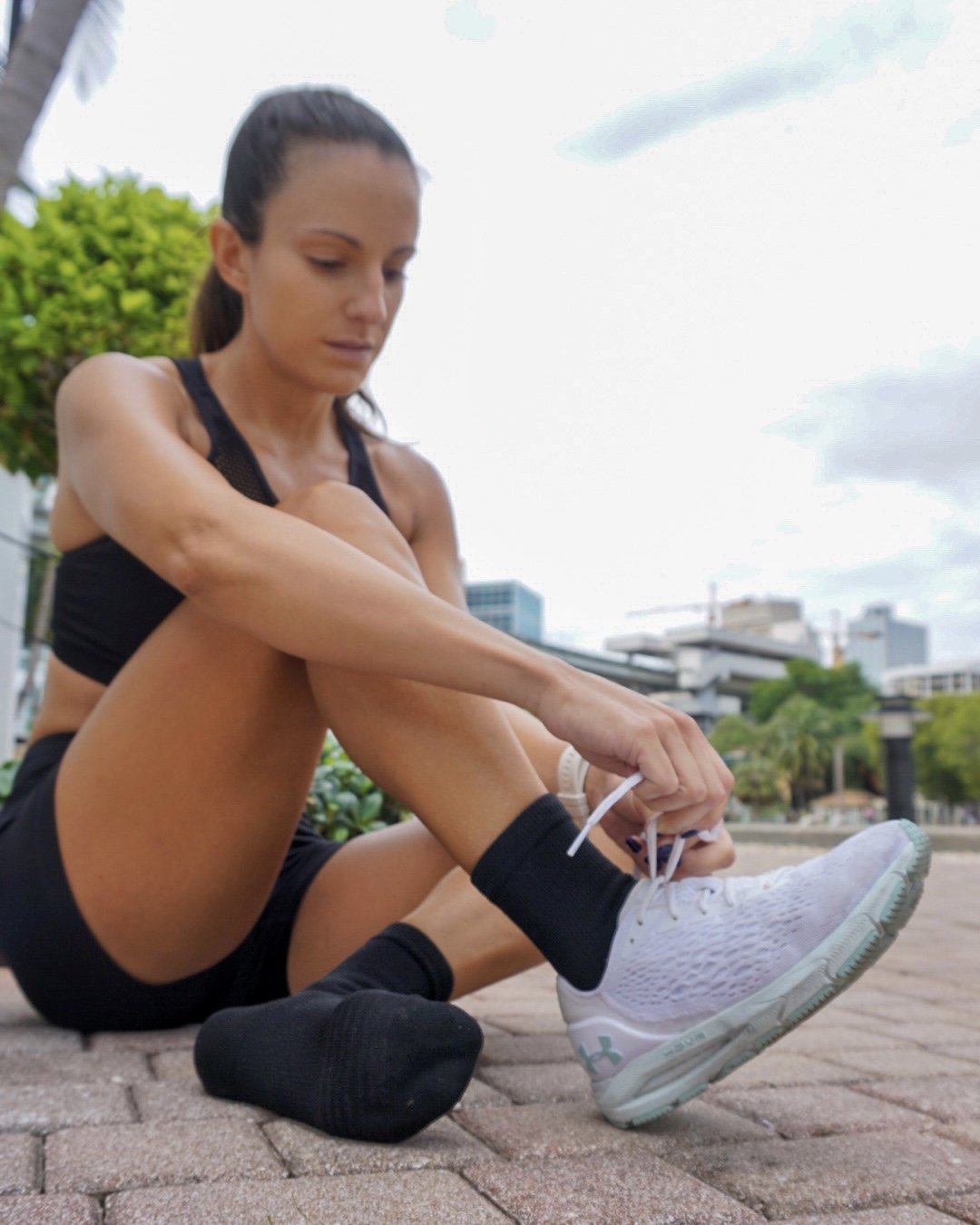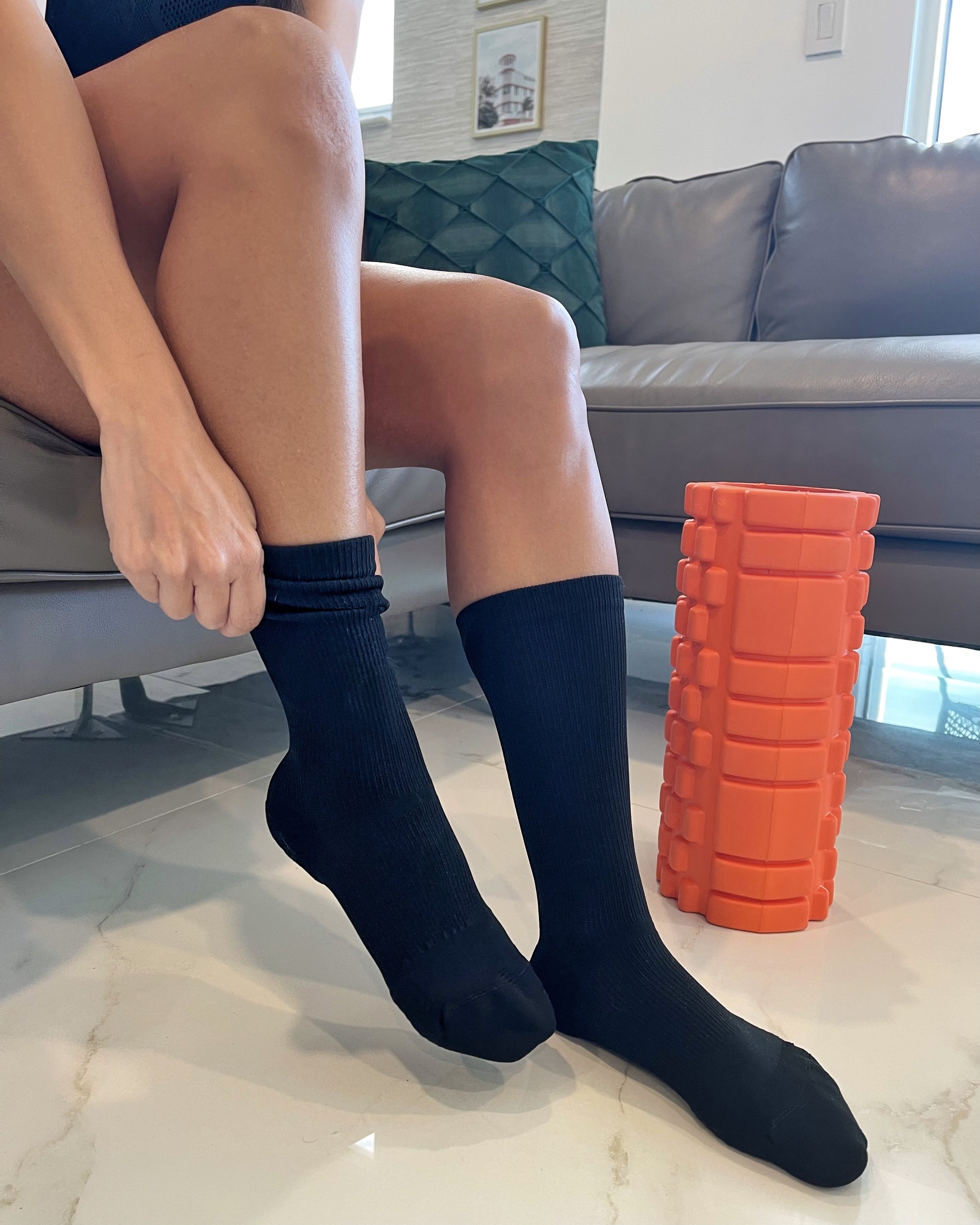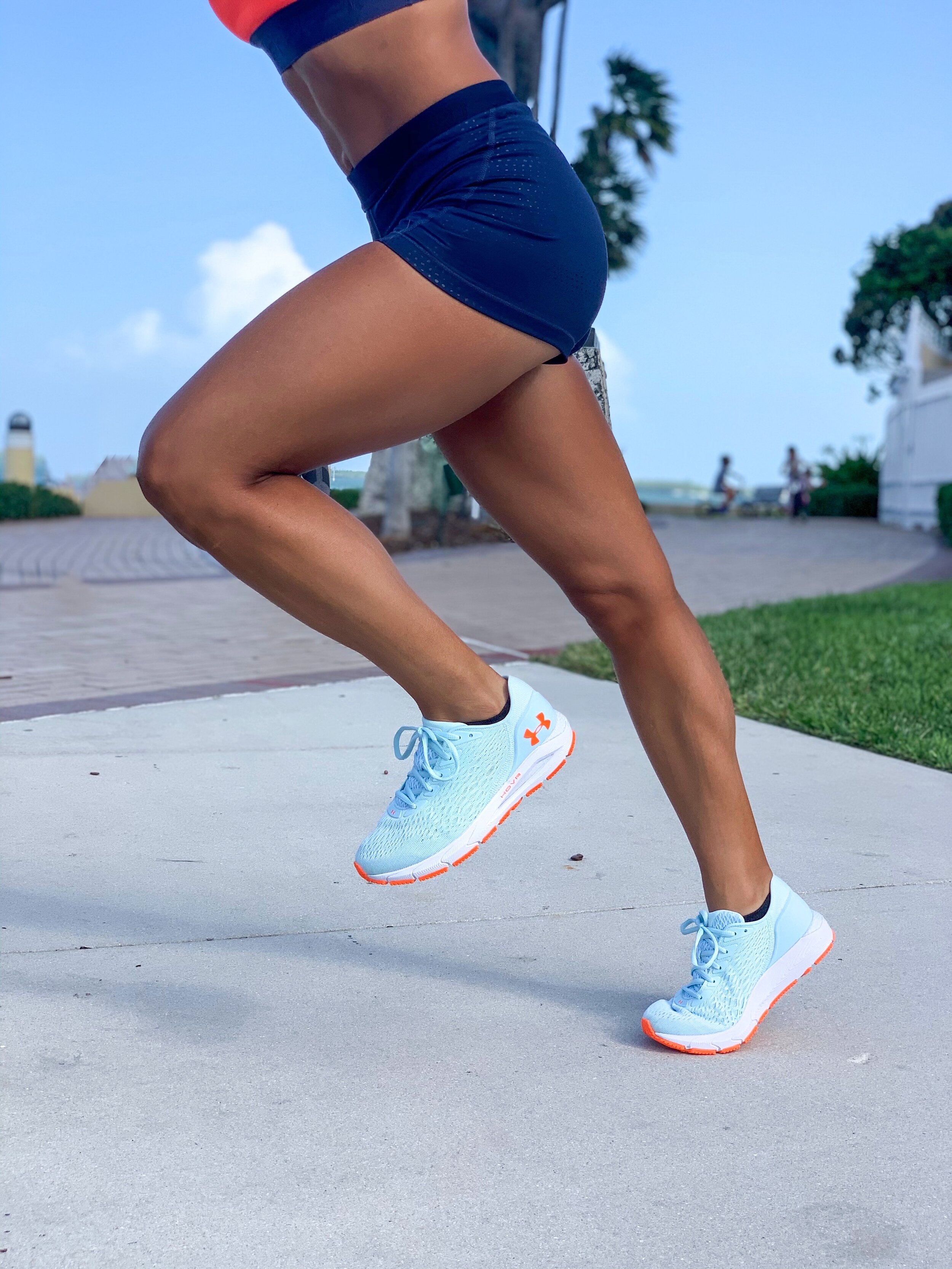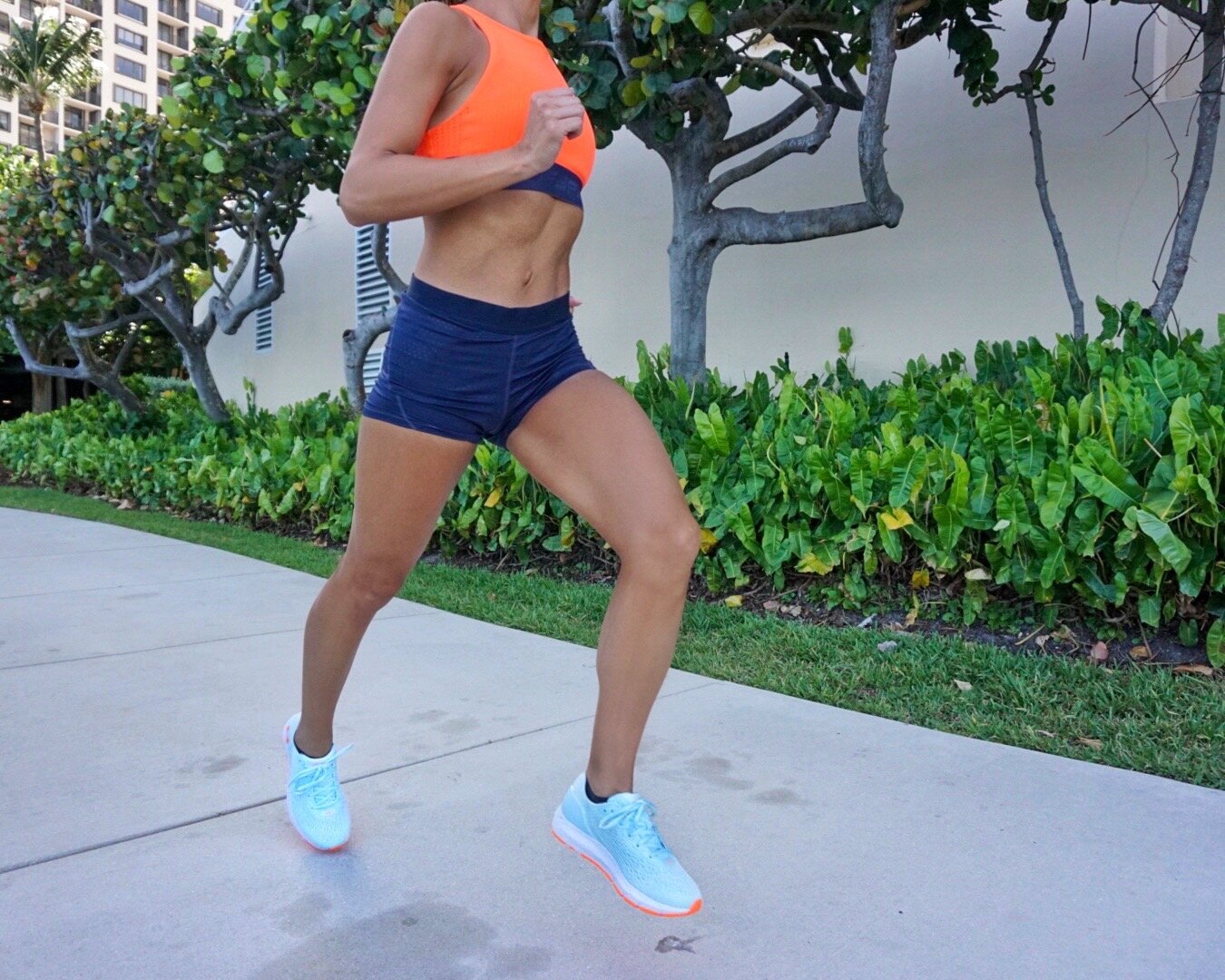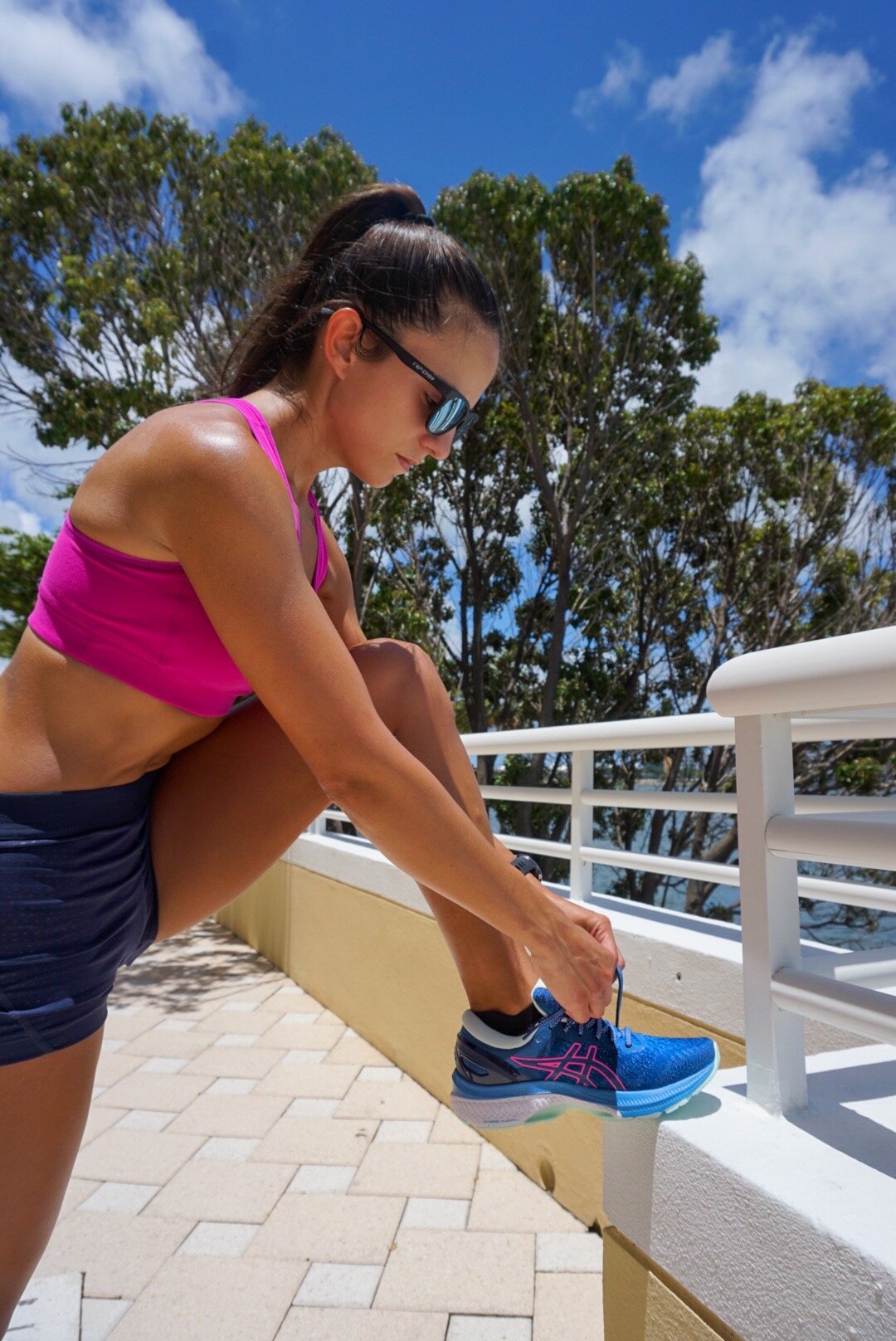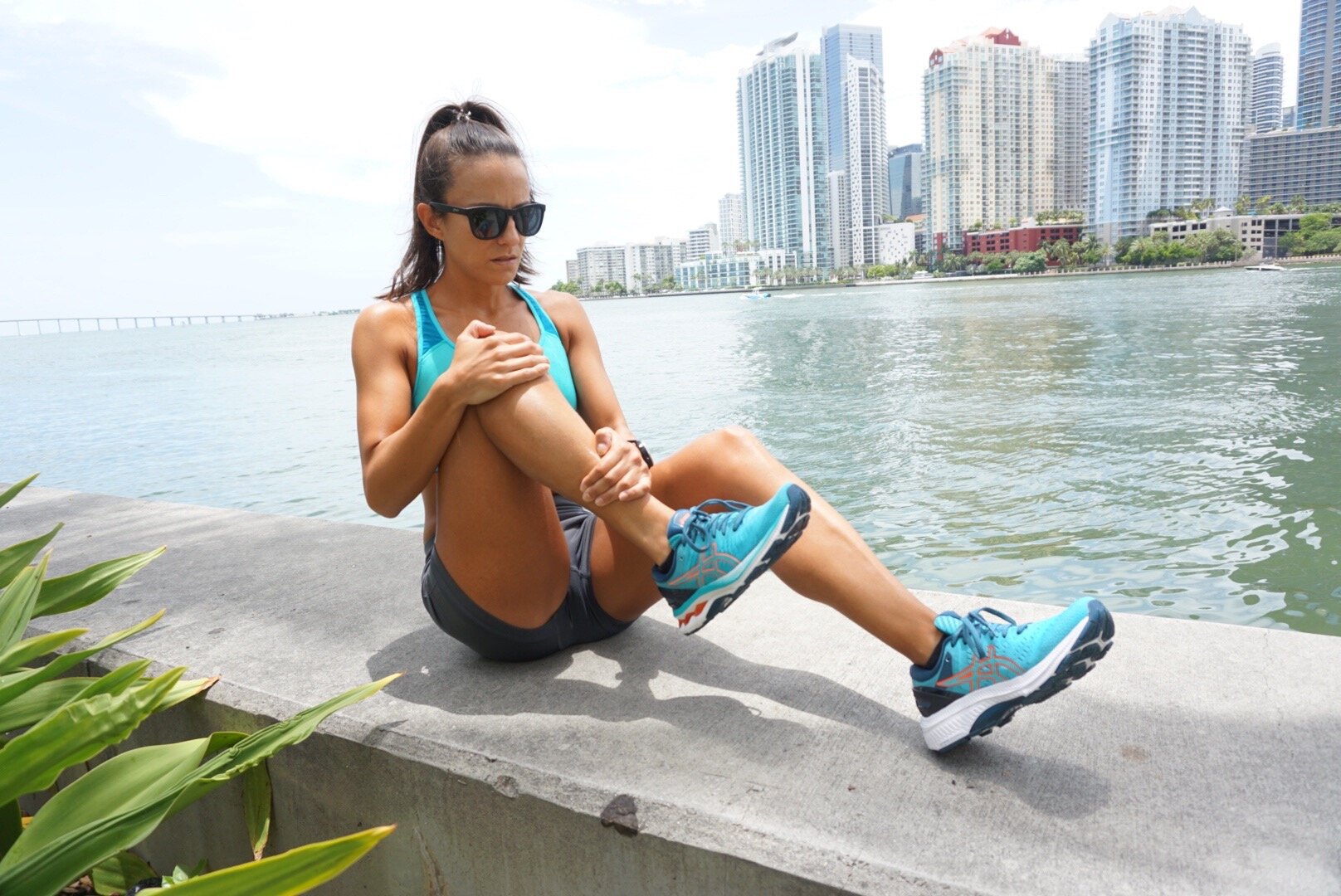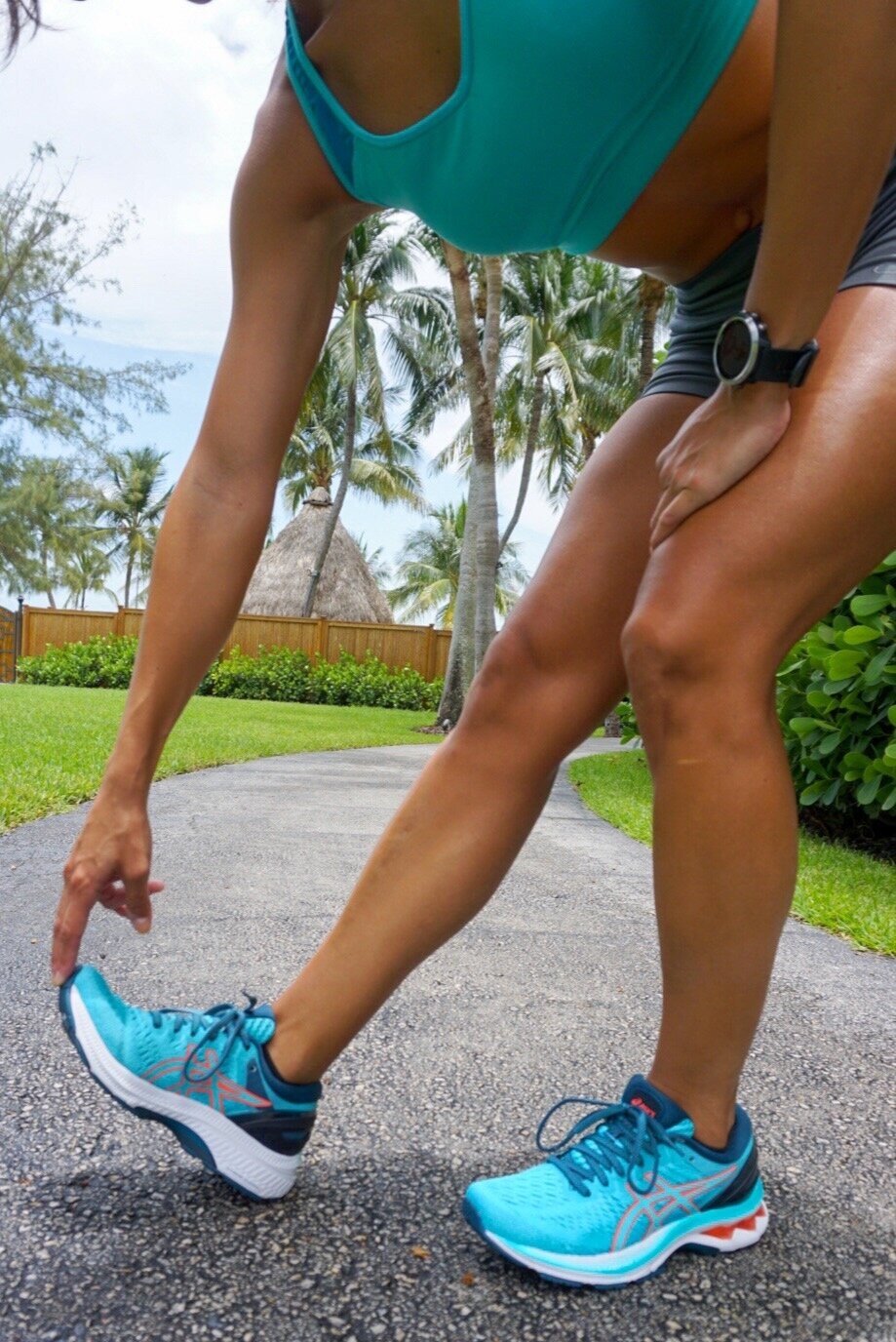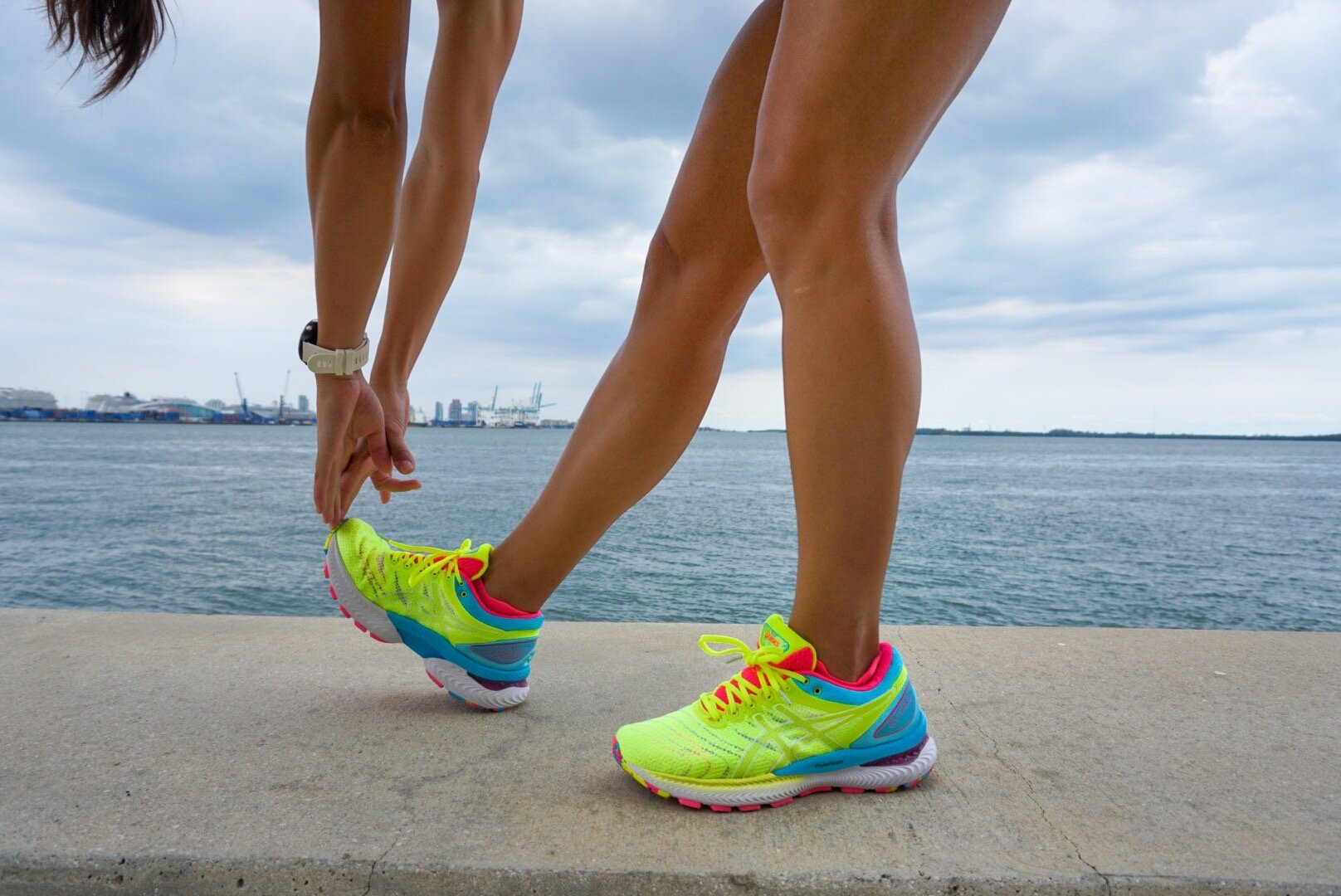It makes sense that foot problems are as common as any other issue in runners since it’s the body part that carries the most weight. It’s the first point of impact, too, so you can imagine how it looks on the inside with the dozens of components that make up just one foot. Yikes! Well, plantar fasciitis is on the top of the list of common running injuries and usually the most frustrating one to deal with. Read on to learn more about how I healed mine for good.
Read moreRun Fast and Recover Faster with Apolla Performance Socks
From racing shoes to headlamps and everything in between, runners can be quite picky about their gear. As time goes on and technology advances, runners want the best of the best to be able to perform well, stay away from injury, and recover as fast as possible. Believe it or not, socks play a significant role in foot health for athletes. They are not just made to add a layer of cushion in between the skin and shoe seams. They can provide the feet, and pretty much every joint up the body, with support and injury prevention no matter what your lifestyle dictates.
Comfort is Always Number One
The first thing we aim for when picking out any piece of an outfit, shoes, or socks, is comfort. Runners, in particular, don’t care as much about looks, as long as they can feel comfortable on their long runs and avoid issues like achy joints, blisters, and heaviness. This all can be solved with a good pair of socks. In comes Apolla Performance. Initially created for dancers, who we can all agree get the most beating to their feet, these styles are equally perfect for any lifestyle. Just recently a research study concluded their effectiveness in reducing force and received the American Podiatric Medical Association Seal of Acceptance.
Apolla Performance socks are all made in the USA with REPREVE, which is certified sustainable yarn. Runners are sure to be happy with the Amp (no-show), the Performance (crew), and the Infinite (mid-calf), since they all provide the perfect thickness to protect from impact, blisters, and moisture, without feeling suffocated in running shoes. Each has energy absorption padding in the heel and ball of the foot which helps cushion during both push-off and landing—the parts of the running cycle that damage the feet the most. If you suffer from plantar fasciitis, you will be grateful for this feature!
Instability is the Enemy
As a physical therapist, I am an advocate for creating the most stable surface during the running cycle. This means being extra picky about the shoes and socks you wear. Weak, overused, or tired ankle and foot muscles can lead to ankle rolls and strains in the tiny muscles of the foot from the constant work when your foot and ankle are not supported well. Apolla Performance socks are made with targeted high compression where you need it the most—around the ankle joint and the arch of the foot. The arch actually has three zones of compression to lift and stabilize, which makes a significant difference if you suffer from plantar fascia issues. In these cases you want to prevent your arch from getting too stretched out, which will end up tugging on your heel bone. It’s a tough condition to treat, so you want to do anything you can to avoid too much pressure to this area!
Work Hard, Recover Harder
The mid-calf Infinite Sock from Apolla Performance is the best choice for both recovery runs and your rest days. Providing your feet and lower legs with compressive support is ideal to help with circulation—the key to recovering faster. This is best done with graduated compression up the calf, which is exactly what this pair provides. Using compression socks during and after runs, especially speed workouts and long runs, is ideal for those suffering from achy calves, shin splints, Achilles tendinitis, and any other foot and ankle conditions. You want good blood flow and comfortable cushioning if you want to be fully ready for your next workout. If you are looking for happy and healthy feet, Apolla Performance has you covered!
Back to Base Building with Asics GT-2009
Sponsored by Zappos. All opinions are my own.
Training for races requires a sequence of steps—phases that can be customized to last as long as you’d like. Since I have been shying away from the virtual races this year, I’ve had the longest “base building” phase ever! It’s not a bad thing since I have definitely improved my overall endurance. The downside of long base building phases turns out to be the increased time on your feet. After all, this phase is really about getting the body used to long distance running, which means our bodies get a bit overused if we aren’t careful with recovery and pacing.
The number one tip I give to my athletes and am very strict about myself is making sure to wear the right shoes for every run. This can make or break your ability to run long and perform your best. It’s a good idea to learn your natural foot strike pattern before trying out different styles of shoes. There are a handful of pairs that I feel protect the feet best if you fall into the category of neutral or overpronation. After having amazing success with ASICS I was lucky enough to get my hands on a pair of the new GT-2000 9 from Zappos. I find almost everything I need for running from Zappos, and you can’t go wrong with their super knowledgeable customer service, speedy shipping (literally 2 days at the most!), and free returns for a year through their rewards program! My ASICS came just in time to start out my next training cycle.
Long Run Dominance
My goal right now is to get myself running long again. It’s what truly helped me during my best training blocks. If you can safely increase your weekly mileage, it is sure to help you set a new PR. By “safely” I mean setting aside enough time to recover in between sessions, taking the majority of your runs easy, and eating enough calories every single day. This does not work for everyone, especially those who have a busy job and family to take care of. Although it’s not impossible to follow a high mileage program, it is certainly not necessary. Many runners do just fine running much less!
The ASICS GT-2000 9 have felt like the perfect pair for endurance runs of any distance. The GEL technology cushioning enhances the shock absorption of the shoe at the heel, which has been a lifesaver for me after several miles, given I am a big heel striker so I need all the cushioning I can get for the impact. The midfoot and forefoot of the shoe is made with a cushioning material called SOLYTE, which provides 20% more shock absorption and is half the weight of standard running shoe foams. This combination is ideal for long runs because you never want a heavy shoe, and you need to be careful with other lightweight shoes because they tend to lack the cushioning and absorption you need to run these long distances without feeling fatigue and resulting in achy feet for days.
Fear Not Pronation
You’ve probably read about how overpronating can create more inefficient running. You can still be fast, but your body sure does have to work harder during certain parts of the running cycle. Unfortunately overpronators are also more at risk of acquiring injuries, such as runner’s knee, IT band syndrome, and plantar fasciitis. One of the best features of the ASICS GT-2000 9 is the combined technology of Guidance Trussic, Guidance Line and Dynamic Duomax that promotes the foot to re-supinate after striking the ground so that the push-off phase can be more efficient. This means your strides will be more powerful and running faster will feel more doable.
Although I am not an overpronator, I still mostly wear stability shoes, since I am very prone to ankle and foot injuries. I often deal with plantar fasciitis and posterior tibialis tendinitis, so having this support from the GT 2000 9 has been helpful in keeping my ankle joint stable during every phase of the running cycle, especially while making turns or running over uneven surfaces. At 10mm, the larger heel drop is definitely a more comfortable option if you are looking to protect your Achilles tendon or have dealt with heel pain. This pair is also lightweight—just under 8oz for women! No need for those extremely unsupportive flats for tempo runs and track workouts! If you are challenging yourself with long distance training or even just casually running to relieve some stress these days, I highly recommend the ASICS GT-2000 9 from Zappos, where you will also find all of your running gear needs!
Endurance Train Like a Pro with the Saucony Ride 13
Sponsored by Zappos. All opinions are my own.
With zero races on my schedule and several months to play around with my training program, I decided these hot summer months are a perfect time to improve my endurance. This may sound crazy since it’s the most uncomfortable time of the year to be running outside for hours. Good thing I don’t mind the hot weather, but it does make running feel harder and less enjoyable sometimes! What helps is reminding myself of my purpose every morning before heading outside. Some days that purpose is for my mental or physical health, other days I run for a specific global cause, and other days I run for the views!
I’ve got several runs under my belt in my new Saucony Ride 13 from Zappos and I have to say I was surprised at the amount of cushioning they had, because when I took them out of the box they felt extremely light, similar to my racing shoes that have almost zero cushioning! I chose the Coral/Alloy color, but it was a hard choice since Zappos also has three other sleek color options that I’ll probably get my hands on as well! You can find almost anything you are looking for on Zappos, and as a rewards member, you can get anything you order in a day or two with their free expedited shipping. The other perk is the free return policy, which is for an entire year! So if you order something and don’t like it or it doesn’t fit right, you’ve got a long time to return.
Consistency is Key
Most of you know I get my runs in no matter what. Over the years, I feel this consistency is what truly built my tolerance for the marathon, and, believe it or not, my improved paces. Although I don’t recommend a high mileage program to everyone, safely increasing what you are doing now is beneficial for building endurance. The most important part of this is making sure you gradually and safely build up mileage. This means making sure you wear the right shoes for YOU. Marathon training requires longer runs than usual, so it’s vital to wear supportive and cushioned shoes so that you can prevent injuries and recover faster. Almost nothing feels worse than having sore feet and ankles for days because you chose to wear the lightest and least supportive shoes on a long run thinking it will make you faster!
Tough Runs Made Easier
The Saucony Ride 13 is an ideal distance-training shoe since it is made with all-around cushioning—even the upper has a light, thin layer of compressive cushion. I felt the shoe had a more ‘fitted’ feel to it and kept my foot in place, even on my 90-minute run this week. A soft and responsive ride is what you want when you are running long and the flexible TRI-FLEXthat creates the outsole of the Ride 13 makes this happen. When I start to get tired in the second half of my runs I notice the pounding of my steps more on my joints. One aspect of this pair that helped soothe this impact is the sensation of the shock being distributed throughout the entire foot rather than just at the heel, where I normally land first.
Runners often get confused as to what ‘responsiveness’ really is and why it plays a role in our performance. It’s basically the way a shoe returns energy to your step. We put our energy into our foot strike onto the ground and a good shoe bounces that energy right back giving you a spring to your step, making running feel easier. This is ideal for summer running, since, as I mentioned at the start, running can feel hard during this time of the year!
The Saucony Ride 13 is a great option for runs of any length, but I’ll be using these for my medium to longer runs. Since they truly have good shock absorption on top of their responsiveness, marathon paced miles will feel smooth, too! If you are looking for a neutral pair for every day runs, the Ride 13 is an excellent choice. The heel offset is 8mm, which is ideal for runners who are either returning from or prone to injuries. Don’t forget to check out the other colors and everything else Zappos has to offer. Their rewards program is waiting for you!
A Long Run Shoe You Can Count On – The Under Armour HOVR Sonic 3
Sponsored by Zappos. All opinions are my own.
If there is one thing I look for in a long run shoe besides cushioning, it’s flexibility. Nothing feels worse on runs over an hour than a stiff shoe. It leaves me with sore feet for days! Since I am prone to plantar fasciitis and have had a history of several foot and ankle injuries, I have to be a little picky about my running shoes. Most runners should be anyway, especially if they plan on training for a half or full marathon. After all our feet carry our entire bodyweight during any standing activity, so if you don’t take good care of them with supportive shoes, you will risk injuring another area in the body on top of limiting your performance.
I am happy I was able to get my hands on a pair of Under Armour HOVR Sonic 3 from Zappos. With their incredible selection of products, it’s always hard to choose just one pair, but this time I was in search of a good long running shoe and the Sonic 3 sounded perfect! As a Zappos rewards member I get free expedited shipping, so my shoes arrived the very next day after placing my order! Another great perk of the rewards member program besides the excellent customer service and speedy shipping, is the 365-day free return policy. If you haven’t joined yet, you are missing out!
Energy Saving
One of the key factors every runner tries to improve for distance running is endurance. It’s all about the way we teach our bodies to store energy and stay strong in order to last as long as possible. Shoes can have this ability, too, just in a different way. The lightweight technology of the Under Armour HOVR Sonic 3 helps transform the energy we put into our steps into energy released by the shoe for a more powerful and efficient stride. For a while, I made the mistake of wearing the wrong shoes for my long runs—shoes that felt light, yet stiff, and definitely not responsive at all. Switching to the Sonic 3 immediately made this energy-saving feature obvious from the start.
As usual, I took my brand new pair out on my regular Sunday short, easy run to test them out. They really didn’t need much ‘breaking in’, and I was surprised at how flexible they felt since I thought the heel counter would make the shoe feel a bit stiff. The heel counter is a great addition to the shoe for me, personally, because it keeps my foot in place. I tend to get annoyed when my shoes get loose during my runs, and this feature made sure to avoid that problem!
Lasting Comfort
As for long runs, this shoe does exceptionally well. First off, the materials are ideal for the intense heat and humidity I run through every day. The upper not only keeps my feet dry, but it provides a compression-like fit, which hugs my foot throughout my entire run—in the lightest way possible! It’s hard finding a shoe that not only feels light for high mileage, but also cushioned enough to keep my feet from getting sore in the days following. The Under Armor HOVR Sonic 3 is the perfect combination of these two features!
Running Tips Straight from the Gait
We rely heavily on the data from our running watches—cadence, pace, heart rate, etc. It’s a never-ending list that can get overwhelming when trying to improve our performance. What if I told you that your shoes can provide you with this information directly? Yes! The HOVR Sonic 3 are one of Under Armour’s connected gear that you can pair to your Map My Run App to get all of the insights of your gait pattern during different runs. The technology provides you with tips in real-time—like DURING your run, to help you correct faulty patterns that can lead to injuries. I’m constantly trying to work to improve my performance as a runner, so I’m excited to have this feature available to me!
The Under Armour HOVR Sonic 3 is officially part of my long run rotation, with its flexible upper, cushioned and compressive fit, and lightweight materials. I highly recommend this pair if you are looking for a light, neutral shoe for daily runs. Zappos has you covered with 5 sleek color options and super fast shipping when you sign up for the rewards membership! You’ll be sure to find any shoes or gear you are looking for when you shop!
Summer Training Success: Featuring Asics GEL-Kayano 27
Sponsored by Zappos. All opinions are my own.
Training during these hot summer months can definitely make even the strongest of runners feel so out of shape! The good thing is that the rumors are true—training in the heat helps build fitness. Every time I’ve planned a fall race, I end up dreading the fact that the bulk of the training and the most intense weeks will land on the hottest part of the year. This is coming from someone who lives in a warm climate year round! Miami is regularly warm, so you would think I am used to it even when summer comes around. But it is a different kind of heat from June through September—very high humidity and dew point and a “feels like” temperature of 100+ degrees almost every single day!
Sadly, we’ve had the majority of our races canceled for the rest of the year, so it can be tough to find the motivation to train at all, especially when it’s stifling outside. I mentioned before and I’ll say it over and over again—new shoes can do wonders to give us a push to get out the door! I’m on my fourth week of using my ASICS GEL-Kayano 27 from Zappos and I’m truly loving them for the bulk of my training. Since my focus is improving my endurance, I’m incorporating several longer easy to medium-paced runs and this pair has been perfect!
Keep It Light
This goes for not just your summer training load, but also your entire outfit. The most comfortable way to run when it’s extremely warm out is with the lightest gear. You don’t want your clothes sticking to you, so make sure you wear light, breathable materials that keep you dry. This is especially important when it comes to shoes. You don’t want your sweat to keep you from reaching your pace goals! I, myself, am definitely not a fan of running shoes that absorb all my sweat and end up feeling heavy and sponge-like—no thank you!
The GEL-Kayano 27 have been the perfect pair for summer running since they are made with a mesh upper that allows air to flow through the shoes to help keep you dry. This is a bit of an update from the previous version, since they expanded the space in between the material’s fibers. Even the sock liner inside the shoe stays dry! By the way, the sock liner actually adds extra plush cushioning that I feel makes long runs much more comfortable! My feet tend to get sore, especially since I’ve had 12-years full of bouts of plantar fasciitis, so any extra cushioning that does not add weight is a plus.
Versatility
I have a neutral running stance and normal arch height, so I generally don’t have to worry about finding a good stability shoe. What I’ve noticed when researching running shoes is that it’s hard to find a pair that works really well for both neutral and overpronating runners. Usually the stability aspect tends to feel stiffer along the outsole if you are a neutral runner, therefore not as comfortable for speedier runs.
The ASICS GEL-Kayano 27, however, is the best of both worlds! The DUOMAX support system helps limit the foot rolling inward (overpronate), but not at the cost of cushioning. It’s made with softer materials so from when the foot strikes the ground all the way to the push-off phase, it keeps the impact less intense, while providing the springiness we want to run at any pace. I noticed this the most when making turns on my runs—the shoe feels like it conforms to the shape of your foot like a foam mattress would, but kept my ankle secure as it rotated.
All in all, I feel the ASICS GEL-Kayano 27 does a great job at protecting my injury-prone feet during my high-mileage training program. After trying them out for every type of run—easy, long, sprints, tempo runs, and hill running, I find they work well for each, but are truly the perfect fit for medium to long consistently paced runs. Since these have been my go-to pair for the bulk of my easy and recovery runs, I even bought a second pair! There are several colors to choose from at Zappos, so take a look for yourself and don’t forget about signing up for the Zappos rewards so you can take advantage of the many benefits, like free expedited shipping, points on every purchase, and a 365 day return policy!
Shoe Review: Asics GEL-Kayano 27
Sponsored by Zappos Running. All opinions are my own.
No races? No problem! You don’t need a race to keep on running. It’s true we find a good amount of motivation when we sign up for a big race, so it’s normal if we are feeling a bit bummed during this time as mostly all races have been canceled for the year. The thing about running that we often forget is that you can do it year round and get good at it, too—whether or not you have a race on the horizon. I, myself, think of other ways to get motivated. I create a list of short term goals for running that get me just as excited as my race goals do, and remind myself that reaching these smaller goals will only lead to better progress when I can finally race again.
Another way I motivate myself is with cool, new running gear. My favorite part of my wardrobe is running shoes, of course! I recently got another brand new pair from Zappos—the Asics GEL-Kayano 27. I shop from Zappos all the time, since they have an amazingly large selection of everything. I am a VIP member which also means I get free, super fast shipping, plus free returns for a year! I always have the best shopping experience and find everything I am looking for.
Next Level Performance
With the many months we have until our next races, it’s a great time to break up the time into different training blocks. One of the best ways to improve in distance running is to focus on the whole package, which takes time! So having lots of it is a good thing! Running in the Asics GEL-Kayano 27 is a perfect option if you are looking for a high-level stability shoe. My first impression of the shoe was how lightweight it is, especially after reading about the different systems that make up the shoe, which I thought would make the shoe feel heavy.
As I usually do with every new pair, I tried out the Kayano 27 for the first time on a short easy run. The first thing I noticed was how conforming the shoe felt during every part of the gait cycle. This is my favorite feature of Asics—the GEL that runs across many of their styles. It’s what lets the shoe move with the foot. Shoes without this feature tend to feel stiff when you push off the ground with the toes. The Kayano 27 does a good job with this transition and provides a springy step.
Built-In Comfort
Since I have a history of ankle and foot injuries and have dealt with plantar fasciitis for almost my whole running life, I try my best to find shoes that have a decent amount of cushioning but still provide the responsiveness I need for speed work. I have a pet peeve with running shoes—shifting of my heel, which is non-existent in the Asics GEL-Kayano 27! The external heel counter of the shoe truly holds the heel in place and makes it feel “locked”, so you can count on these shoes to feel more fitted than most other styles.
The DUOMAX support system is a game changer for those of you who overpronate naturally while you run. It’s what gives the shoe the stability aspect and controls that inward rolling of the foot. Not controlling overpronation during running can lead to a long list of injuries such as direct ankle and foot problems, runner’s knee, IT band syndrome, and low back pain. It’s important for runners to pay attention to this when choosing the right shoe. This pair also has a specially designed trusstic system in the women’s shoe compared to the men’s, with softer foam.
I’m excited to keep using my GEL-Kayano 27 for the bulk of my training since so far I find that they truly protect my feet from the constant impact of my daily running. I highly recommend this pair for medium to long runs at a consistent pace, although they are pretty good at quick pace changes, as well! I’ll keep you all updated as I continue to break them in and use them for different distances and run types. In the meantime, check out all of the colors on the Zappos site and don’t forget about the VIP membership benefits!
Running & Rehab: Peroneal Tendon Injuries
A true runner without a history of pain or injuries is one in a million. The constant pounding on the ground through all of the joints in the body is bound to put stress on some area of weakness and eventually cause discomfort. If you have searched for the most common running related injuries or pain, you have probably come across knee or IT band issues. The ankle and foot are almost, if not just as common as those two. It makes sense why—the feet take on the most pressure during running since they carry our entire body weight throughout the running cycle. Foot structure and deformities are one of the main reasons injuries to this body part occur. Unfortunately once you injure the foot or ankle once, you are prone to getting injured again, especially if you do not take care of the cause.
Besides foot structure, general ankle instability is a problem for runners, causing a large percentage of traumatic injuries such as sprains and tears, as well as overuse injuries and pain like plantar fasciitis and tendonitis. An overlooked and often misdiagnosed issue is peroneal tendon dysfunction. The two peroneal tendons run along the outer side of the lower leg, one connecting to the side of the foot and the other underneath the foot. These tendons are responsible for eversion of the foot, which is the movement of rotating the foot out to the side. It is quite common for peroneal tendon issues to be mistaken for ligament injuries (sprains). Understanding the causes and how to address instability is key to full recovery from and prevention of peroneal tendon dysfunction.
Types of Peroneal Injuries
Tendonitis
This diagnosis presents itself with inflammation in one or both tendons and is usually caused by activities that involve repetitive overuse of the peroneal tendons. Trauma, such as an ankle sprain, can also cause tendonitis since when rolling the ankle the tendons must powerfully try to control from rolling too far. Pain is normally felt behind or underneath the outer ankle bone during activity, and subsides with rest. Treatment involves using anti-inflammatory pain medication, rest, and activity modifications. If the tendonitis is severe, immobilization for four to six weeks in a walking boot may be necessary.
Dislocation
Also called ‘subluxation’, this injury consists of the tendons snapping out of place over the outer ankle bone. There is a sheath that holds the tendons in place at all times that may tear with traumatic events and cause this dislocation. Already present deformities such a shallow or nonexistent groove where the tendons lie or a loose sheath to begin with can also be the cause. After the initial trauma, it may be difficulty to diagnose this issue since there is subsequent inflammation throughout the entire joint. The snapping is felt during forceful dorsiflexion and inversion, or flexing the ankle joint upwards as if raising the toes while rotating the foot inwards. Runners will feel the snapping during the push-off phase of running since it is a forceful movement from heel strike or a neutral position to pointing the toes downward.
Treatment for initial encounter subluxations can and should be treated conservatively with rest, immobilization in a cast or boot, and anti-inflammatory medications. For injuries involving a tear of the sheath, chronic dislocations due to ankle deformities, or failed conservative treatment, surgery will be the only option to repair the cause. After surgical repair, physical therapy will be necessary to manage pain and inflammation and restore motion and strength. Individuals who experience chronic dislocations of the peroneal tendons should seek treatment as soon as possible as this consistent snapping can lead to tears.
Tendon Tears
This peroneal tendon diagnosis can be a result of an acute traumatic injury such as a severe ankle sprain. Chronic issues such as consistent dislocations or weakness and instability in the ankle joint can also cause tears by means of overuse leading to fraying and splitting of the tendon. Individuals with high arches are more prone to this type of overuse and should consider using arch support orthotics in their shoes especially for running and other high impact sports. Surgery is usually required to repair the torn tendon, followed by immobilization and physical therapy.
Ankle and Foot Strengthening
Since instability and weakness are a main cause of most foot and ankle issues in runners, it makes sense to incorporate direct strengthening exercises for these areas. A simple strategy is to perform a few before an easy run about three times per week. Resistance bands can be used to target the main movements of the ankle as shown below. Heel and toe raises will also strengthen the calves and dorsiflexors (muscles along the shins). The smaller muscles of the foot can be strengthened with toe curls using a towel on the floor and trying to pick it up with your toes for up to ten repetitions for two to three sets. More advanced exercises consist of using unstable surfaces such as a balance disc or foam mat to perform exercises.
Ankle pain and instability is often diagnosed as a sprain, especially if there was a trauma. It is important to keep in mind that sprains can also involve tendon injuries. If you are diagnosed with a lateral ankle sprain and have done all treatment correctly but continue to have pain, the next step should be to follow-up with your doctor to check for any peroneal tendon injuries. Most cases with minimal symptoms do well with conservative management. Unfortunately if there is a greater loss of function, especially for athletes who want to continue their demanding sport, surgery may be necessary. As mentioned above, the foot and ankle joints are very important for runners, therefore any instability or weakness should be taken care of to avoid injury. If not taken are of, foot problems tend to lead to issues in higher joints such as the knee, hip and back. It is useful to remember that healthy feet leads to healthy running!
Sources
Kinner Davda, Karan Malhotra, Paul O’Donnell, Dishan Singh, and Nicholas Cullen, Peroneal Tendon Disorders, Journal, Apr 28, 2020.
A Colorful Shoe Review: Asics Gel Nimbus 22
Sponsored by Zappos. All opinions are my own.
If there is a way to get a runner hyped for their training program, it’s with a fun, new pair of shoes. My motto for gear is: the brighter, the better! Along with an energetic color, of course my running shoes need to have the right qualities to lead me to fast and comfortable miles. I tend to choose my running shoes based on the type of run I’m going for—easy, tempo, sprints, or long runs. If you’re like me and have issues such as plantar fasciitis, a history of foot or ankle injuries, or simply weak ankles, then support is the number one quality to seek.
I got a new pair of Asics from Zappos and I’m obsessed, especially since they are the brightest any running shoe can be! If you’re not into the neon colors, Zappos has so many others available. I get pretty much all of my running apparel and shoes from Zappos and they satisfy my every need without fail! You can always count on their knowledgeable customer service to help guide you to the best picks and take care of any issues. They also offer free expedited shipping if you are a VIP rewards member (which is FREE to sign up!) and free returns for one year. It’s the best place to shop for all running essentials!
Every Day Runner
If you are looking for all around cushioning, Asics Gel Nimbus 22 is a good choice. It’s packed with their signature Gel Technology both in the forefoot and rearfoot to provide comfort to the entire foot, while absorbing shock during impact. I’ve been running in the Nimbus 22 for about 6 weeks now, and they’ve only gotten better with every run. I’ve tried them out for every type of workout, but seem to love them the most for my medium to long easy runs. These are the sessions that I use as both recovery and aerobic work so I can tell you the Nimbus 22 are perfect for keeping my feet from getting sore or overworked.
At first this pair took a couple of runs to really break in. They felt slightly stiff, but by day three they were extremely flexible, yet still supportive throughout the gait cycle. Push-off feels springy, but not so much that excessive pressure rolls onto the balls of the feet and toes. One update from the previous model that adds to the responsiveness is an extra 2 millimeters of plush FLYTEFOAM Propel technology. It keeps it springy with a softer landing. The “stiffness” I felt is actually a benefit because it aids in supporting the foot when making turns especially at a fast pace. My ankles are on the weak side, so any time a shoe keeps my ankle from rolling is a bonus!
Durability is Key
The unfortunate issue year round distance runners have to deal with is the quick wear and tear of our favorite pairs. You would think speed workouts wear away shoes quicker, but for me it’s the every day pairs—the ones I wear for my easy medium to long runs, since they make up the bulk of my weekly mileage. Most brands create running shoes with the lightest materials possible, since it truly does make a difference for speed, but unfortunately make the shoes less durable. Asics uses a technology called Trusstic System, which enhances the structural integrity of the shoe, but still keeps it lightweight. Usually a significantly supportive shoe will be the opposite—heavy and bulky. There are other materials built into the Nimbus 22 that also improve the lifespan, such as AHAR (Asics High Abrasion Rubber), which is embedded within the outsole of the shoe and does not add weight at all. If you come across a running shoe that lasts longer than the typical 200 to 300 miles, you have found a winner! I have not yet reached this mileage yet with my Nimbus 22, but can already tell how much they can withstand after over 120 miles in them so far.
As I mentioned in the beginning, running is much more exciting when you are wearing a good shoe and even more so when the shoe is bright and colorful. In my opinion, something about neon hues brings energy to my runs! These beauties are part of Asics’ Run in Color collection and are currently my favorite out of the many pairs I own! Again, if you are not a fan of the bright colors and are looking for a more minimal-toned, neutral, or less shocking shoe, Zappos has it all!
Shoe Review: ASICS GEL-NIMBUS 22
Sponsored by Zappos
All opinions are my own.
Constantly packing on miles every week means I am continuously rotating through different types of shoes in order to keep my feet healthy. It is not just our form that plays a role in our injury risk and performance, but our running shoes are an important part of the process as well. It’s hard to find a shoe that’s good for every type of run—some will be strictly for track work or fast speed sessions, others for long runs, and others for use on the trails. You really shouldn’t just wear one pair for everything anyways, but it’s good to have a pair that’s well-rounded for whatever workout you have planned.
This is where the ASICS GEL-NIMBUS 22 comes into play. I was lucky enough to try out a pair from Zappos, which have a very large selection of shoes, so you can be sure to find anything you’re looking for! As a Rewards Member, you get free returns for 365 days, so if you’re not happy with the fit or just don’t like the style, you can return them without a problem. You can also always count on their 24/7 customer service. They are extremely knowledgeable about all of their products and are there to help you with all of your questions. You only win as a Zappos Rewards Member!
All Around Support
Most new runners will ask what to look for in a running shoe. This all depends on the type of running you do: sprinting, short distances like 5ks, or long distances such as half and full marathons. For the most part, one of the most important aspects to look for in a shoe is support. After all that’s what shoes are supposed to be doing anyway—supporting your feet. The ASICS GEL-NIMBUS 22 is created with rearfoot and forefoot gel technology, so basically the entire shoe cushions at every angle of the running cycle. The midsole has a specific foam called FLYTEFOAM technology that helps when running longer distances—I definitely noticed this difference comparing the NIMBUS 22 with my other long run shoes on a 15-miler over the weekend.
The qualities of running shoes will also depend on your biomechanics and body features. Runners with a history of joint problems such as knee or hip surgeries, back pain, or arthritis definitely don’t want a minimally cushioned shoe made just for speed work. The NIMBUS 22 has you covered with pretty much perfect cushioning for these cases. If you pronate when you land (foot rotates inward), you should wear shoes that somewhat correct the pronation. The ASICS GEL-NIMBUS 22 are made for neutral runners, so won’t provide the correction you need if you overpronate.
Fast Quality That Lasts
Most running shoes made for fast running and racing last for what feels like a second. It’s not uncommon for these significantly overpriced race shoes to be good to toss by 125 miles. That’s at least a third of the durability of most other running shoes. The reason for this is because fast shoes are made as light as possible, with the least amount of material, which wears away quickly. The GEL-NIMBUS 22 are made with a rubber termed “AHAR”, or ASICS High Abrasion Rubber, along the outsole of the shoe, which reduces the overall wear. I was surprised that these shoes felt light for speedier miles, given the weight of the shoe is about 9 ounces.
Giving the shoe an extra spring-like feel during push-off is the special FLYTEFOAM technology. I felt my foot bounced right off after landing, preserving energy to help me last longer at my paces. Although the shoe felt a bit stiff at first when walking around, the sole actually felt springy with every step while running. I was worried that stiffness would make my heel striking too impactful for my plantar fasciitis-prone feet, but the extra layer of gel cushioning along the rear sole definitely lessened the impact with every step and made for a soft landing!
All in all the ASICS GEL-NIMBUS 22 felt the best for every day medium to long running at an easy pace. As far as speed sessions, I feel these are the best for tempo workouts since they hold up well for long intervals at faster paces. Using this pair will save me from having to replace my sneakers so often, since they are much more durable than most of the pairs I normally wear. If you are looking for a shoe with max cushioning, but still on the light side, I highly recommend the NIMBUS 22. And don’t forget to shop them from Zappos!


